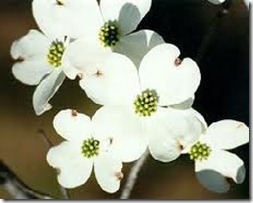Anyone who has seen native dogwoods bloom in their natural setting will want them in the yard. Flowering dogwoods, both the eastern species Cornus florida and the western Cornus nuttallii, thrive at the edge of clearings or in semi-shaded woods. They are useful in a partially shaded landscape, both as understory tree and graceful backdrop for rhododendrons or azaleas. Flowering dogwoods, also appreciated for their colorful fall foliage and berries, are striking as single specimens or when clustered in groups. Most dogwood blooming problems can be resolved fairly easily.
The Typical Dogwood Bloom
-
Flowering dogwoods tolerate a variety of climates and soils, and require well-drained, acidic soils that aren’t too dry. These small to medium-size trees do best in partial shade, though with enough moisture they can survive the stress of full sun. Dogwoods will also grow in deep shade, though they may not bloom well. According to the University of Arkansas Extension website, flowering dogwoods will start to bloom between 4 and 6 years of age.
Dogwood "Flowers"
-
What people think of as dogwood flowers are actually modified leaves, called bracts, which surround the dogwood’s cluster of very tiny actual flowers — later, bright red berry-like seeds that birds enjoy eating. The exact timing of the spring bloom varies among climates, and is also affected by elevation and weather. But trees bloom for two to four weeks in spring, producing attractive "flowers" 3 to 6 inches across. Native dogwood blooms are typically creamy white. Some cultivars flower in other colors, from pale pink to red.
Late Bloomers
-
Sometimes gardeners are too good to their flowering dogwood trees, inadvertently encouraging vegetative growth at the expense of flowers through over-fertilizing. Juvenile trees in particular are prone to vegetative growth spurts that will delay blooming. Deep shade can also delay flowering, sometimes indefinitely. Prune nearby vegetation to create a partially shaded setting. Avoid all nitrogen fertilizers — try super bloom or high phosphate fertilizers instead, to support blooming — and cut back fertilizing by half, to slow vegetative growth and encourage dogwoods to bloom the next year.
Other Bloom Problems
-
According to University of Illinois Extension website, pruning too late in the season can also affect blooming. Buds for the next season’s flowers are already formed by mid- to late summer of the previous year. So if your dogwood needs light pruning, do it in late spring. Buds can also be damaged by severe cold weather — and in that case the only thing you can do is prune away the dead or damaged stems and hope for better weather next year. Disease is another possible cause for no blooms. Spot anthracnose, often a problem during cool, wet spring weather, causes numerous brown spots on leaves and blooms that may wither and fall.


Deprecated: strpos(): Passing null to parameter #1 ($haystack) of type string is deprecated in /home/agriviek8Qv/agriviet.net/public_html/wp-includes/comment-template.php on line 2522